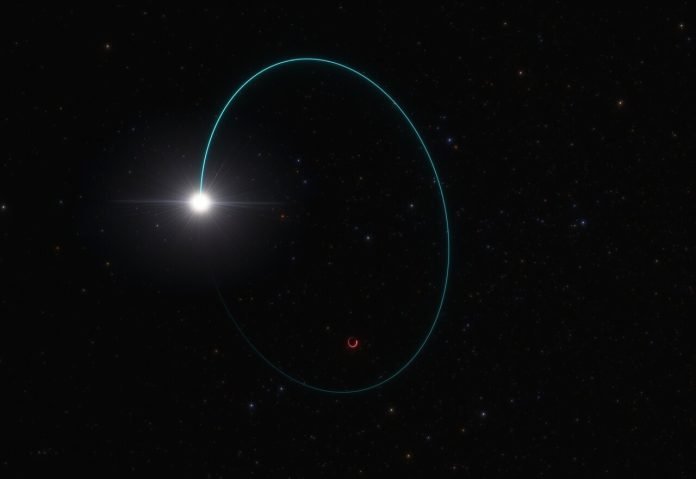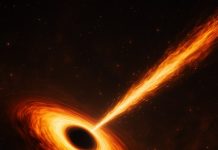
Astronomers have recently unveiled the most massive stellar black hole ever found in our Milky Way galaxy.
This enormous black hole, located just 2,000 light-years away in the constellation Aquila, weighs an astonishing 33 times more than our sun.
Known as Gaia BH3, or simply BH3, this discovery was made using data from the European Space Agency’s Gaia mission.
Stellar black holes like BH3 are created when very large stars collapse under their own gravity at the end of their life cycles.
Until now, the average stellar black hole found in our galaxy was about 10 times the mass of the sun, with the previously largest known, Cygnus X-1, weighing 21 solar masses.
This makes the discovery of BH3, with its 33 solar masses, particularly remarkable.
The discovery team, part of the Gaia collaboration, came across this black hole while preparing for an upcoming data release from the Gaia mission.
They noticed that a star was moving in a strange, wobbling pattern—a clue that it might be orbiting a hidden black hole.
To confirm their findings, they used additional data from the European Southern Observatory’s Very Large Telescope (ESO’s VLT) in Chile and other ground-based observatories.
The instruments, particularly the Ultraviolet and Visual Echelle Spectrograph (UVES) on the VLT, helped the astronomers learn more about the companion star.
This star’s movements and characteristics were key to accurately measuring BH3’s massive weight.
Pasquale Panuzzo, a Gaia collaboration member and astronomer at the Observatoire de Paris, expressed excitement over the find, noting that discovering such a high-mass black hole nearby was unexpected and extraordinary.
Researchers have identified similarly massive black holes outside of our galaxy, but this is the first time they’ve confirmed one inside the Milky Way with this method.
The scientists involved in the study suggest that BH3 likely formed from a metal-poor star—a type of star with fewer elements heavier than hydrogen and helium.
These stars are theorized to lose less mass during their lifetimes, leaving more material to collapse into a black hole when they die.
Further insights were gained from analyzing the metal content of BH3’s companion star, indicating that the star that collapsed to form BH3 was also metal-poor. This supports the theory that high-mass black holes are linked to such stars.
The findings from this research were so significant that the team chose to publish them ahead of the full data release from Gaia, scheduled for late 2025. This early publication will allow other astronomers to start studying this fascinating black hole immediately.
Looking ahead, further observations with tools like the GRAVITY instrument on ESO’s VLT Interferometer will continue to unveil more about BH3’s nature and its surrounding environment. This discovery not only advances our understanding of black holes but also challenges existing theories about how they form.
Source: ESO.



